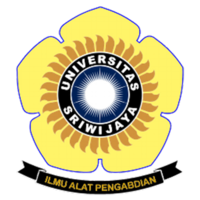Efektifitas Penanaman Melaleuca Cajuputi Pada Area Pascatambang IUP Banko Barat PT. Bukit Asam, Tbk.
Abstract
Nutayla Nazula, E. Arti Adi, 2020. Effectiveness planting melaleuca cajuputi in post minning area banko barat PT. Bukit Asam, Tbk. In: Herlinda S et al. (Eds.), Prosiding Seminar Nasional Lahan Suboptimal ke-8 Tahun 2020, Palembang 20 Oktober 2020. pp. xx. Palembang: Penerbit & Percetakan Universitas Sriwijaya (UNSRI).
Post-mining land has potential damage after mining activities ends, excavating the soil and returning it to the ex-mining pit causes the soil bearing capacity to be low and even damaged so that reclamation with adaptive plants such as melaleuca cajuputi (eucalyptus) is needed. The purpose of this study was to determine the effectiveness of the growth of melaleuca cajuputi plants in post-mining locations. The research method used is by making field benchmarks to measure and analyze plant growth rates, plant health percentages, plant height and diameter. The results of the analysis of the percentage of plant growth in the three sampling locations showed that the percentage of plant growth was above 90%, so it could be said that the plant growth was in excellent condition. The health level of plants at the East Backfilling Pit 3 and West Backfilling Pit 3 locations showed 100% healthy results for the number of living plants while in the West Backfilling Pit 1 location there were still plants that languished due to lack of plant maintenance. The success of reclamation can be achieved if the plants grow well and are healthy, the percentage of plant growth desired and the number of plants per hectare are achieved. The conclusion from this research that the planting of melaleuca cajuputi is very effective as a reclamation plant of PT. Bukit Asam, Tbk. because this plant can grow well, adaptive in critical land conditions and provides high economic value and also give benefits to the community.
Post-mining land has potential damage after mining activities ends, excavating the soil and returning it to the ex-mining pit causes the soil bearing capacity to be low and even damaged so that reclamation with adaptive plants such as melaleuca cajuputi (eucalyptus) is needed. The purpose of this study was to determine the effectiveness of the growth of melaleuca cajuputi plants in post-mining locations. The research method used is by making field benchmarks to measure and analyze plant growth rates, plant health percentages, plant height and diameter. The results of the analysis of the percentage of plant growth in the three sampling locations showed that the percentage of plant growth was above 90%, so it could be said that the plant growth was in excellent condition. The health level of plants at the East Backfilling Pit 3 and West Backfilling Pit 3 locations showed 100% healthy results for the number of living plants while in the West Backfilling Pit 1 location there were still plants that languished due to lack of plant maintenance. The success of reclamation can be achieved if the plants grow well and are healthy, the percentage of plant growth desired and the number of plants per hectare are achieved. The conclusion from this research that the planting of melaleuca cajuputi is very effective as a reclamation plant of PT. Bukit Asam, Tbk. because this plant can grow well, adaptive in critical land conditions and provides high economic value and also give benefits to the community.
Keywords
adaptive, eucalyptus, landfill, reclamation
Full Text:
PDFArticle Metrics
Abstract view : 569 timesPDF - 1290 times
Refbacks
- There are currently no refbacks.

